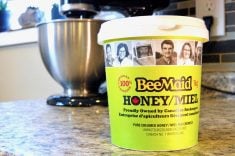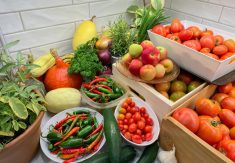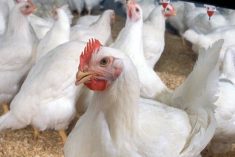“Mom, I’m going to have an orange,” my teenage daughter said as she passed by me on her way to the kitchen sink.
“That’s good. There’s a plastic orange peeler in the drawer,” I said.
I was pleased that she knew she should wash her hands and then rinse the whole fruit under running water before peeling it.
I had prepared a simple lunch consisting of vegetable soup, crackers, cheese, deli meat and milk. She added the missing food group, fruit.
Read Also

Duguid named to MFGA Wall of Fame
Interlake farmer Mike Duguid has become the latest to join the Manitoba Forage and Grassland Association’s Wall of Fame. The…
“My hands are going to smell like an orange. This white stuff is hard to remove,” she said as she scored the rind with the peeler.
“The white part is called the albedo or pith. It’s a good source of fibre such as pectin,” I said.
“Albedo is a strange word,” she said as she divided the orange into segments. She was humouring me with her interest during my impromptu fruit lesson. She popped a segment in her mouth and deemed it “delicious” and “juicy.”
Navel and Valencia oranges are two common varieties. My daughter was eating a navel orange, which has a “belly button” on one end. Navel oranges appear as though another tiny orange is beginning to grow on the end opposite the stem. They are seedless, easily peeled and in good supply from January through March.
Valencia oranges have seeds and abundant juice. While they usually are associated with the summer months, you often can buy them from February through October.
Most oranges get their characteristic colour from carotenoid pigments. The orange peel or rind is called the flavedo, and contains flavourful, essential oils. Some recipes, such as those for marmalades, call for the orange zest (grated peel). The zest adds flavour to recipes.
If you aren’t expecting it, the colour of some oranges may surprise you when you slice them. Blood or Moro oranges have burgundy-coloured flesh. The dark red comes from the anthocyanin pigments they contain. Anthocyanins act as antioxidant compounds that may help fight cancer and other diseases.
Oranges are rich in nutrients, including vitamin C and potassium. Some researchers have rated oranges higher than apples in their power to “keep the doctor away.” Researchers have shown that oranges and other citrus fruits may play a role in pre- venting heart disease and cancer.
At only 80 calories per medium-size fruit, oranges are a nutritional bargain and portable snack. One orange provides a full day’s supply of vitamin C, which our body uses to build collagen to keep our skin healthy, among its many functions.
Vitamin C is known as ascorbic acid, which means “no scurvy.” Scurvy is a now-rare disease that results from a vitamin C deficiency. During long voyages, early sailors experienced aching joints, skin breakdown and bleeding gums. When they ate citrus fruits on their voyages, they no longer suffered from the disease. Therefore, they became known as “limeys.”
Are you eating about two cups of fruit per day? While drinking juice may seem easier, whole fruits and vegetables offer the fibre advantage. As a result of their fibre content, we may feel full more readily when we eat whole fruit, compared with drinking juice.














